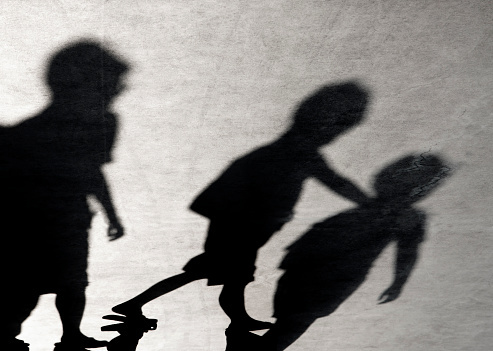
Friendships across racial lines are common among children until around the age of 10. But then something changes. Children begin to self-segregate by race in classrooms and cafeterias, even in diverse and integrated schools. They begin to mirror the racial divides reflected in their communities and society. Researchers have documented this repeatedly, but they’ve struggled to understand why it happens. The long-standing assumption has been that children become more prejudiced at this age. As a result, educators typically focus on making racial attitudes more positive. But growing evidence shows that this decline in friendships is not caused by a spike in prejudice (in fact, explicitly racist views generally decrease at this age). Our new research, in collaboration with Stanford psychology professors Carol Dweck and Jennifer Eberhardt, suggests that this withdrawal from cross-race encounters may have less to do with how prejudiced children are and more to do with what they come to believe is true of a person’s prejudice—that it is permanent. Children understand that “once a racist, always a racist,” which increases their anxieties about interacting across racial lines.
Our research suggests that children withdraw from cross-race engagement because, at around 10 years of age, they come to view prejudice as a despicable trait that does not change. Children at this age begin to recognize the stakes associated with race and cross-race interactions—including the risks of being labeled as, or targeted by, someone prejudiced. And to the extent that children come to believe in the permanence of prejudice, they disengage from the cross-race encounters that could subject them to these risks.
In our first experiment, we measured the extent to which 8-13 year-olds thought of prejudice as a fixed quality, by asking them how much they agree with statements like, “People have a certain amount of prejudice and they can’t change that.” We then had them create video messages for a same or different race peer and measured their interest in interacting with this individual. Not all children believed that prejudiced was fixed, but those that did displayed more distant behaviors when creating their video message and reported less interest interacting with their cross-race peer in the future. Children who believed that prejudice is an attribute that can change, behaved quite differently: they were more friendly and they reported an increased desire to interact with their cross-race peer.
We also measured how much prejudice they had against other races. But being more or less racist did not affect the results—even children who showed low levels of prejudice showed less interest engaging across racial lines when they thought prejudice was fixed. What mattered was whether they believed prejudice could change.
In a second experiment, we examined 10-12-year-old children engaging in real cross-race interactions with peers who they had never met. Prior to interacting, we asked children to read a story about the Civil Rights Movement. We gave half of the children a version of the story that underscored a fixed view of prejudice (e.g., “Prejudice is permanent because after it develops, it usually does not change”) and the other half a version that underscored a malleable view of prejudice (e.g., “Prejudice is not permanent, because even after it develops, it can be changed”). We then randomly paired children who read one of these story versions with a child at another elementary school who was either the same or different race. Then, we let them interact naturally via live video stream. Our results show that children exposed to a malleable view of prejudice reported less anxiety in cross-race interactions than those exposed to a fixed view. Perhaps most striking, the malleable view of prejudice caused both white and racial minority partners to want to interact more in the future. The malleable view of prejudice seemed to assuage white children’s fears of being labeled a racist, and Black and Latinx children’s concerns with engaging with someone unalterably biased against them.
This research with children teaches adults something vital about racism and the broader goal of bringing people together. No one is born prejudiced. We absorb information from our environment, our role models, our schools, and the media. Prejudice is learned, and therefore, can be shaped by more learning through positive and open contact with people from other racial backgrounds, and through questioning our environment.
Our cultural fixation on labeling people as racist or not only reinforces the idea that people are either good or bad and that prejudice is unshakeable. We cannot treat the solution to racial divisions in society as an exercise in rooting out the bad apples. Instead of treating prejudice as an essential fixture of our core, we should treat it like it is—a malleable quality that is shaped and reshaped over time through our experiences. Doing so might make people less consumed with avoiding situations that could prove them as racists, and more interested in learning from others and aspiring to constructively engage across racial lines. To spark inclusive behaviors and support for policies that address inequities, we need a willingness to reach across the racial divide. When we feel there is space for mistakes and growth, we welcome the challenge of learning from our differences and the prospect of change.
More Must-Reads from TIME
- Cybersecurity Experts Are Sounding the Alarm on DOGE
- Meet the 2025 Women of the Year
- The Harsh Truth About Disability Inclusion
- Why Do More Young Adults Have Cancer?
- Colman Domingo Leads With Radical Love
- How to Get Better at Doing Things Alone
- Michelle Zauner Stares Down the Darkness
Contact us at letters@time.com